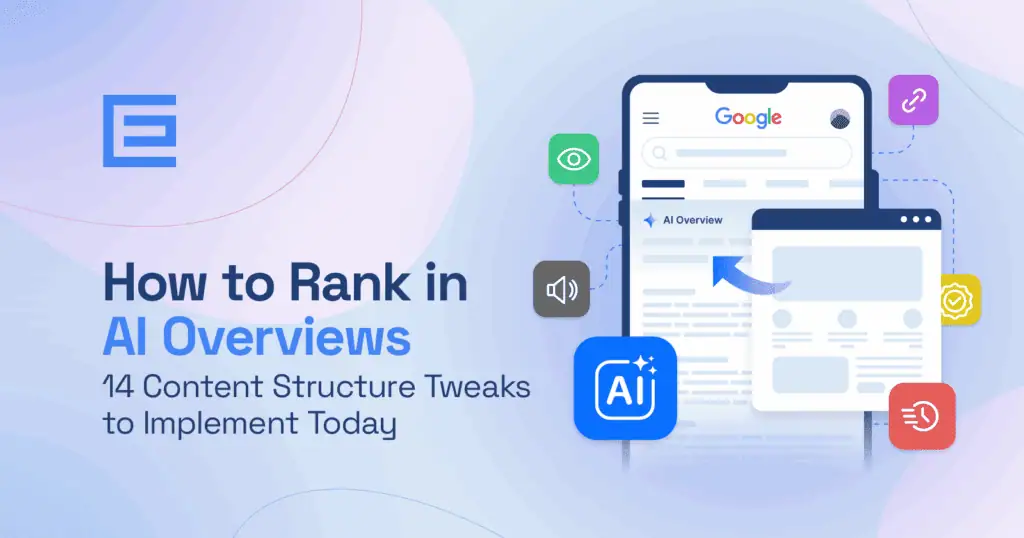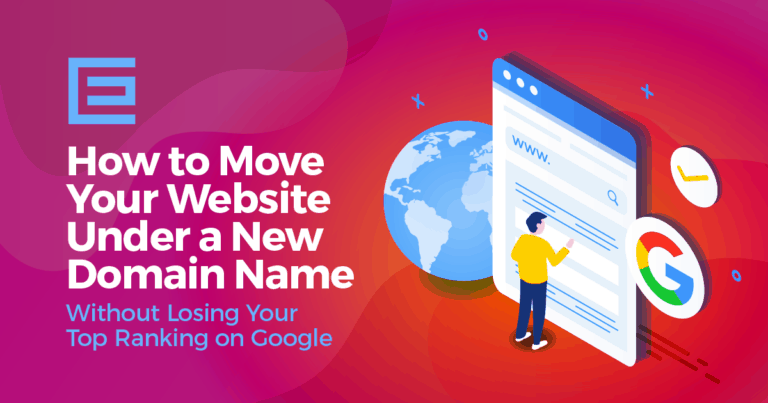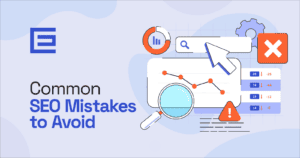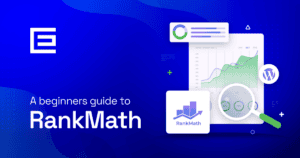Let’s face it – Google’s AI Overviews have completely changed the search landscape. These AI-generated summaries now sit at the top of search results, grabbing eyeballs before anyone even scrolls down to the traditional organic listings. For small business owners trying to drive more traffic and leads through organic search results, this is both a challenge and an opportunity.
You might be wondering, “How do I get my content featured in these coveted Google AI Overviews?” The answer isn’t just about traditional SEO strategies anymore – it’s about structuring your content in ways that make it irresistible to AI search systems while still serving your human readers.
- 1Understanding AI Overviews and Their Impact on SEO
- 2Create Direct Answer Sections at the Top of Content
- 3Implement Strategic Heading Hierarchy
- 4Optimize Paragraph Length and Structure
- 5Use Bullet Points and Numbered Lists
- 6Incorporate Definition Sections
- 7Implement Comprehensive Schema Markup
- 8Balance Keyword Usage with Semantic Relevance
- 9Create FAQ Sections with Structured Data
- 10Optimize for Mobile Experience
- 11Add Clear E-E-A-T Signals Throughout Content
- 12Develop Topic Clusters Around Key Subjects
- 13 Include Multimedia with Proper Markup
- 14Structure Content to Match Search Intent
- 15Implement Regular Content Freshness Updates
- 16Measuring Your AI Overview Success
- 17Conclusion: Implementing Your AI Overview Strategy
- 18FAQs About Ranking in AI Overviews
In this article, we’ll cover:
- Why AI Overviews matter for your small business’s visibility
- 14 practical content structure tweaks you can implement today
- How to measure if your AI Overview optimization efforts are working
Don’t just watch your competitors grab all the AI Overview real estate – let’s get your content structured properly so you can claim your rightful spot at the top of search results!

QUICK TAKEAWAYS:
- Google AI Overviews pull information from multiple sources, giving featured websites prominent visibility above traditional organic listings
- Start content with direct answer sections of 60 words or less to help AI search quickly identify core information
- Structure content with proper heading hierarchy (H1, H2, H3) to help AI search engines understand content relationships
- Use bullet points and numbered listsprinciple lists – 78% of AI Overviews contain lists in some form
- Implement comprehensive schema markup (especially FAQ, HowTo, and Article types) to provide context for AI
- Balance exact keywords with semantically related terms to create topical comprehensiveness
- Create FAQ sections with structured data to directly address user queries in an AI-friendly format
- Optimize for mobile experience since Google uses mobile-first indexing to evaluate content
- Include E-E-A-T signals like author credentials, cited research, and experience markers
- Develop topic clusters with pillar and supporting content to demonstrate topical authority
- Nearly half of AI Overview sources come from outside the top 10 organic results, creating opportunities for smaller sites
- Match content structure to search intent (informational, commercial, or transactional) for better relevance
- Update content regularly to signal freshness and relevance to Google’s AI Overviews
Understanding AI Overviews and Their Impact on SEO
Generative AI Overviews (formerly known as Google’s Search Generative Experience) are those neat little AI-generated summaries that appear at the top of search results. They pull information from multiple sources to provide comprehensive answers to user queries – without requiring users to click through to any website.
Honestly, when they first appeared, many website owners panicked. “If Google answers everything right in the search results, why would anyone visit my site?” It’s a fair concern! But here’s the thing – AI Overviews also include links to sources, giving featured websites prominent visibility and credibility.
For small businesses, appearing in these overviews can be game-changing. You’re essentially getting Google’s AI to vouch for your content as a trusted source. That kind of endorsement is worth its weight in gold for building authority and driving qualified traffic. If you’re looking to enhance your online visibility, working with professional seo services can help optimize your content specifically for AI Overviews.
Want to maximize your chances of appearing in AI Overviews? Start by examining the current AI-generated answers for your target keywords. Study the structure, language, and depth of information provided, then create content that goes deeper while following a similar organizational pattern. This competitive analysis gives you a blueprint for what Google’s AI currently values for those specific search queries.
Now, let’s get into the nitty-gritty of how to structure your content to improve your chances of ranking in these AI-generated summaries.
14 Content Structure Tweaks to Rank in AI Overviews
1. Create Direct Answer Sections at the Top of Content
Have you noticed how AI Overviews always lead with a clear, direct answer? That’s your first clue about what Google’s AI search is looking for.
Start your content with a concise, direct answer to the main search query your page addresses. Think of it as creating a mini “answer box” right at the top of your content. For example, if your article is about “how to clean solar panels,” your opening paragraph should directly address this with something like:
“Solar panels should be cleaned using distilled water, a soft brush or sponge, and mild soap if necessary. The ideal cleaning frequency is every 3-6 months, depending on your local environment and weather conditions.”
This direct approach helps Google’s AI quickly identify the core information it needs for generating overviews. Keep these answer sections under 60 words for maximum effectiveness. If you want to improve your content strategy even further, check out our guide on writing content that people actually want to read for more insights.
Create a dedicated “Quick Answer” section at the top of your content using a different background color or border to make it stand out visually. Make sure this section directly addresses the primary keyword or question in clear, straightforward language, and keeps the answer under 50 words for optimal AI processing. Test different formats like bullet points versus paragraph style to see which performs better for your specific topics.
2. Implement Strategic Heading Hierarchy
Headings aren’t just for making your content look organized – they’re critical signposts that help AI search engines understand your content’s structure and relationships between ideas.
Use a logical heading hierarchy with:
- One H1 tag that includes your main keyword
- H2 tags for major sections
- H3 tags for subsections within those major sections
The key here is making sure your headings create a sensible outline when read alone. Google’s AI systems are particularly good at understanding this kind of hierarchical structure, using it to determine how ideas relate to each other.
A little tip from the trenches: Try to include semantically related terms in your H2s and H3s, not just variations of your main keyword. This signals topical comprehensiveness to generative AI systems.
Conduct a heading audit of your top-performing competitors who appear in AI Overviews. Extract just their heading structure (H1, H2, H3) and analyze the patterns – what questions do they address? How do they break down the topic? Use this competitive intelligence to create an enhanced heading structure that covers all the same bases while adding unique angles that provide additional value to searchers.
3. Optimize Paragraph Length and Structure
Long blocks of text are the enemy of both human readers and AI systems! Keep your paragraphs short and focused – typically 2-4 sentences each.
Start each paragraph with a clear topic sentence that communicates the main idea. This makes it easier for AI to extract the essential information from each section of your content.
You know what makes a real difference? Varying your paragraph length. Mix ultra-short, punchy paragraphs (even single sentences sometimes!) with slightly longer ones. This creates a natural rhythm that keeps readers engaged while making your content more digestible for AI systems.
Try the “inverted pyramid” paragraph technique where you put the most important information at the beginning of each paragraph, followed by supporting details. This structure mimics journalistic writing and makes it much easier for AI systems to extract the key points from your content. Apply this technique especially to the first paragraph of each major section to improve your chances of being quoted in AI Overviews.
4. Use Bullet Points and Numbered Lists
AI Overviews love lists – they’re easy to parse, clearly structured, and perfect for presenting multiple related points. Studies from SurferSEO found that 78% of AI Overviews contain lists in some form.
When should you use bullets versus numbers? Use:
- Bullet points for unordered collections of related items
- Numbered lists for sequential steps, rankings, or prioritized information
Make sure each list item is concise and begins with active language. For example, instead of “Content optimization is important,” write “Optimize your content regularly.”
Another benefit? Lists break up text visually, making your content more scannable for human readers too – talk about a win-win!
When creating lists for AI Overview optimization, use “parallel structure” where each bullet point follows the same grammatical pattern (all start with verbs, all are complete sentences, etc.). This consistency makes it easier for AI to parse and extract your list. Additionally, keep list items between 5-15 words each, as overly complex list items are less likely to be included in AI-generated summaries.
5. Incorporate Definition Sections
Clear definitions are gold for AI Overviews, which often need to explain concepts to users. Create dedicated definition sections for key terms related to your topic.
Format them consistently – perhaps in italics or as indented paragraphs – so they stand out visually. For example:
AI Overview: An AI-generated summary that appears at the top of Google search results, combining information from multiple sources to provide comprehensive answers to user queries.
Place these definitions strategically near the beginning of relevant sections, where they provide necessary context for the information that follows.
Create a glossary-style section at the beginning or end of your content that defines 5-7 key terms related to your topic. Format these definitions consistently using bold term names followed by concise explanations. AI generated responses often extract these clean, structured definitions for inclusion in overviews. For maximum impact, research the exact language Google currently uses to define these terms in featured snippets and align your definitions accordingly.
6. Implement Comprehensive Schema Markup
Schema markup is like giving Google’s AI a roadmap to understand your content. It’s structured data that explicitly tells search engines what your content means, not just what it says.
For AI Overview optimization, these schema types are particularly valuable:
- FAQPage schema for question-and-answer content
- HowTo schema for instructional content
- Article schema for news or blog content
- Product schema for e-commerce pages
Don’t feel intimidated by the technical side – tools like Google’s Structured Data Markup Helper can walk you through implementation. After adding schema, validate it using Google’s Rich Results Test to ensure there are no errors. For a deeper dive into this topic, check out our comprehensive guide on schema markup to help boost your AI Overview visibility.
Schema implementation gives you a competitive edge because, surprisingly, many small business websites still don’t use it properly – or at all!
Combine multiple schema types on a single page for maximum AI visibility. For example, if you have a how-to guide, implement both HowTo schema for the main content and FAQPage schema for the FAQ section at the bottom. This layered approach helps AI systems understand different content components separately, increasing the chances that portions of your page will be extracted for relevant queries. Always test your implementation with Google’s Rich Results Test before publishing.
7. Balance Keyword Usage with Semantic Relevance
Gone are the days when stuffing a page with keywords would help you rank. Today’s AI search results systems understand semantic relationships between words and concepts.
Instead of repeating the same keyword, use semantically related terms that help build a comprehensive topic footprint. For example, if your main keyword is “home office setup,” include related terms like “ergonomic chair,” “productivity space,” “remote work environment,” and “desk organization.”
Tools like Surfer SEO can help identify these semantic keywords by analyzing top-ranking pages. The goal isn’t hitting a specific keyword density – it’s creating content that comprehensively covers all aspects of a topic that users might want to know about. Understanding how to use semantic HTML properly can further enhance your content’s clarity for both search engines and AI systems.
Create a semantic keyword map before writing content by combining results from multiple tools: Google’s “People Also Ask” and “Related Searches,” keyword research platforms, and natural language processing tools that identify related entities. Group these terms by subtopic to ensure comprehensive coverage in your content. This approach creates a semantic network that signals to AI systems that your content thoroughly addresses the subject from multiple angles.
8. Create FAQ Sections with Structured Data
FAQ sections are perhaps the most AI Overview-friendly content format you can create. They directly address user queries in a format that’s perfect for large language models to parse and extract.
Make your FAQs truly valuable by:
- Addressing genuine questions your audience asks (check “People Also Ask” sections for ideas)
- Keeping questions conversational and natural-sounding
- Providing concise but complete answers
- Implementing FAQPage schema markup
Place your FAQ section strategically – either after your main content to address lingering questions, or dispersed throughout your content where specific questions naturally fit with the surrounding information. Understanding the 5 most important semantic markups for your website, including FAQ schema, can significantly boost your chances of appearing in AI Overviews.
Develop a “tiered FAQ strategy” where you include both basic and advanced questions. Start with fundamental questions that directly match common search queries, then progress to more complex questions that showcase your expertise. This approach satisfies different search intents while signaling depth of knowledge to AI systems. Update your FAQs monthly based on Google Search Console data to address emerging questions in your niche.
9. Optimize for Mobile Experience
Did you know that Google uses mobile-first indexing? That means the mobile version of your site is what Google’s AI sees when determining rankings – including for AI Overviews.
Mobile optimization isn’t just about responsive design; it’s about creating a seamless content experience on smaller screens:
- Ensure text is readable without zooming
- Maintain adequate space between clickable elements
- Minimize intrusive pop-ups that might disrupt reading flow
- Optimize page speed (aim for under 3 seconds loading time)
Use Google’s Mobile-Friendly Test and PageSpeed Insights to identify specific areas for improvement. Even small mobile experience tweaks can significantly impact how AI systems evaluate your content’s quality and usability.
Focus on optimizing your “Core Web Vitals” metrics specifically for mobile devices, as these performance indicators heavily influence AI Overview eligibility. Reduce JavaScript execution time, optimize images with next-gen formats like WebP, and implement proper font loading strategies. These technical optimizations improve user experience while sending strong signals to Google’s AI about your content’s quality and accessibility.
10. Add Clear E-E-A-T Signals Throughout Content
Google’s AI search results have gotten remarkably good at identifying content that demonstrates Experience, Expertise, Authoritativeness, and Trustworthiness (E-E-A-T). These signals are especially important for AI Overviews, which aim to provide reliable information.
How can you strengthen E-E-A-T signals in your content?
- Include author bios with relevant credentials
- Link to authoritative external sources
- Share first-hand experiences and insights
- Cite relevant statistics and research
- Update content regularly to maintain accuracy
An interesting approach I’ve seen work well is incorporating “experience markers” – phrases like “In my 15 years of experience…” or “After working with dozens of clients in this situation…” – that signal real-world expertise that AI can recognize. For a deeper understanding of how Google evaluates content quality and analyzes SERP features, learn more about understanding the new E in E-E-A-T and how it affects your rankings.
Create an “Authority Statement” section near the beginning of your content that concisely establishes why readers should trust your information. Include relevant credentials, years of experience, and specific qualifications related to the topic. Back this up with a properly structured author schema that links to professional profiles. These explicit authority signals help Google’s AI identify your content as a trustworthy source worth featuring in overviews.
11. Develop Topic Clusters Around Key Subjects
AI systems love content that demonstrates topical authority through comprehensive coverage. Build topic clusters by creating:
- Pillar pages that broadly cover a main topic
- Supporting content that dives deeper into specific aspects
- Strong internal linking between related pieces
This cluster structure helps Google’s AI search results understand the relationships between content pieces and positions your site as an authority on the broader topic. When Google’s AI looks for sources to include in overviews, sites with well-developed topic clusters often get preference.
The beauty of this approach is that it works equally well for both AI Overviews and traditional SEO strategies – it’s a long-term strategy that pays dividends in multiple ways.
Implement a “hub and spoke” content architecture where each main topic (hub) links to at least 5-7 related subtopic pages (spokes), all using consistent anchor text that reinforces semantic relationships. Create a visual sitemap of these clusters to ensure logical organization, and include breadcrumb navigation that reflects this structure. This approach creates a content ecosystem that significantly increases your chances of being seen as an authoritative source by AI systems.
12. Include Multimedia with Proper Markup
Visual content doesn’t just engage human visitors – it can help you rank in AI Overviews too. Google’s AI search results are increasingly sophisticated in understanding and valuing multimedia content.
For maximum impact:
- Include relevant images, videos, charts, or infographics
- Add descriptive alt text that includes contextually relevant terms
- Use descriptive filenames for images (e.g., “solar-panel-cleaning-tools.jpg” rather than “IMG_12345.jpg”)
- Implement structured data for videos and images
Remember, it’s not just about having multimedia – it’s about integrating it meaningfully into your content so it enhances understanding of your topic. Learn more about the strategic benefits of adding videos to website content to improve engagement and AI recognition.
Create custom, data-driven visualizations that present complex information in easily digestible formats. Include proper schema markup for these visuals and ensure alt text explains not just what the image shows, but the key insight it conveys. This approach adds unique value that AI systems recognize as enhancing user understanding, making your content more likely to be featured in overviews for queries where visual explanation adds clarity.
13. Structure Content to Match Search Intent
Different searches have different intents behind them. Someone searching “what is content marketing” has different needs than someone searching “content marketing tools.”
Align your content structure with the primary search intent:
- Informational intent: Focus on clear explanations and comprehensive coverage
- Commercial intent: Structure content around comparisons and evaluations
- Transactional intent: Highlight features, benefits, and clear next steps
Research the current AI Overviews for your target keywords to understand what content structure Google’s AI search results currently favors for that particular search intent. Then, structure your content accordingly while adding your unique value and perspective. Understanding the differences between search intent categories is crucial for optimizing your content for AI Overviews.
Conduct “intent analysis” by examining the verb phrases in your target search queries: “how to” indicates procedural intent, “what is” suggests definitional intent, “vs” signals comparison intent, etc. Create content templates optimized for each intent type, with specific structures, formatting, and schema markup tailored to how AI systems process different query types. This intent-aligned approach dramatically increases your chances of matching what Google’s AI is looking for.
14. Implement Regular Content Freshness Updates
AI Overviews tend to favor content that’s not just comprehensive but also current. Regularly updating your content signals to Google’s AI search results that your information is fresh and reliable.
Develop a content update schedule where you:
- Review existing content quarterly
- Update statistics and examples
- Add new sections to address emerging subtopics
- Remove outdated information
- Add timestamps or “last updated” notices
These freshness signals help Google’s AI recognize your content as current and relevant, increasing your chances of being featured in AI Overviews. For more guidance on maintaining content quality over time, check out our guide on how to update your website regularly to stay relevant in search results.
Create a systematic content refreshing calendar where each piece is updated on a schedule based on topic volatility. Fast-changing topics need monthly updates, while stable topics might need only quarterly attention. Don’t just update dates – add new sections addressing recent developments, update statistics, and revise examples to reflect current trends. Each time you make substantial updates, resubmit the URL in Google Search Console to prompt recrawling and faster recognition of your freshness signals.
Measuring Your AI Overview Success
How do you know if your content structure tweaks are actually helping you rank in AI Overviews? While there’s no official reporting yet in Google Search Console specifically for AI Overviews, you can track several indicators:
- Monitor your target keywords using tools like SE Ranking or Ahrefs, which now track AI Overview appearances
- Watch for increases in brand impressions without corresponding click increases (indicating AI Overview visibility)
- Track featured snippet performance, as there’s often overlap with AI Overview sources
- Look for increases in authority metrics like Domain Rating or Domain Authority
Don’t get discouraged if you don’t see immediate results. Like traditional SEO, optimizing for AI Overviews is a marathon, not a sprint.
Set up a custom Google Analytics 4 segment specifically for tracking traffic that might be influenced by AI Overviews. Look for patterns such as increased brand searches, changes in engagement metrics, and shifts in traffic sources. Create a monthly “AI Overview Impact Report” that correlates your optimization efforts with these metrics to identify which specific content structure tweaks are delivering the best results for your business.
Conclusion: Implementing Your AI Overview Strategy
Getting your content featured in AI Overviews isn’t about tricking the algorithm – it’s about creating genuinely helpful, well-structured content that makes it easy for AI systems to understand and extract value.
Start by implementing a few of these content structure tweaks on your most important pages, then gradually expand your optimization efforts across your site. Focus first on high-traffic pages or those targeting keywords where AI Overviews currently appear.
Remember that what works for AI also works for human readers – clear structure, comprehensive coverage, and helpful information never go out of style!
What content structure tweaks will you implement first? The landscape of AI-powered search is constantly evolving, but with these strategies, you’ll be well-positioned to claim your spot in AI Overviews and drive more qualified traffic to your small business website.
FAQs About Ranking in AI Overviews
Google AI Overviews are AI-generated summaries that appear at the top of search results, pulling information from multiple sources to create comprehensive answers to user queries. They include citations to source websites, giving featured sites prominent visibility above traditional organic listings.
AI Overviews fundamentally change SEO by pushing traditional organic results down the page while creating new visibility opportunities. They prioritize well-structured, authoritative content over keyword-optimized pages, and sites featured in overviews gain significant credibility and exposure without requiring a click.
Informational queries trigger AI Overviews most frequently, especially “how-to” questions, definitional searches, and comparison queries. Studies show that long-tail keywords with clear search intent are 3-5 times more likely to generate overviews than short, ambiguous terms or transactional searches.
AI Overviews represent the future of search, where getting featured as a source can drive significant brand awareness, establish authority, and generate qualified traffic. With studies showing nearly half of overview sources come from outside the top 10 organic results, they create unique ranking opportunities for businesses of all sizes.
Rank in AI Overviews by implementing structured content with clear headings, direct answers, and relevant schema markup. Focus on comprehensive topic coverage using semantically related keywords, showcase E-E-A-T signals, optimize for mobile experience, and create content clusters that demonstrate topical authority across your site.
Tags: AI • Digital Marketing • Search Engine Optimization






